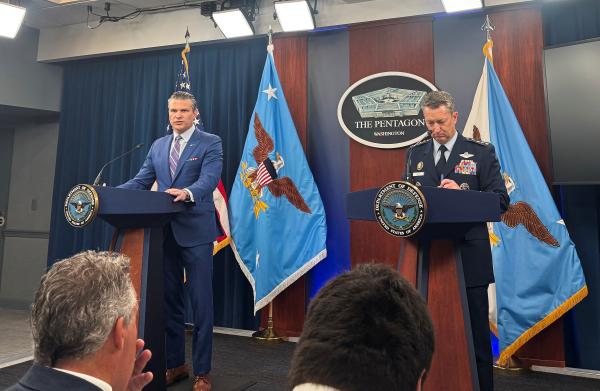WASHINGTON, June 26 — United States (US) Defence Secretary Pete Hegseth said he was unaware of any intelligence suggesting Iran had moved any of its highly enriched uranium to shield it from US strikes on Iran's nuclear program over the weekend.
US military bombers carried out strikes against three Iranian nuclear facilities over the weekend with more than a dozen 30,000-pound bunker-buster bombs.
The results of the strikes are being closely watched to see how far the strikes may have set back Iran's nuclear program.
"I am not aware of any intelligence that I have reviewed that says things were not where they were supposed to be, moved or otherwise," he said in an often fiery news conference on Thursday.
Trump, who watched the news conference, echoed his Defence Secretary, saying it would have taken too long to remove anything.
"The cars and small trucks at the site were those of concrete workers trying to cover up the top of the shafts. Nothing was taken out of facility," Trump, without providing evidence, wrote on his social media platform.
Several experts cautioned this week that Iran likely moved a stockpile of near weapons-grade highly enriched uranium out of Fordow before the strike early Sunday morning and could be hiding it and other nuclear components in locations unknown to Israel, the US and United Nations nuclear inspectors.
They noted satellite imagery from Maxar Technologies showing "unusual activity" at Fordow on Thursday and Friday, with a long line of vehicles waiting outside an entrance to the facility.
On Sunday, a senior Iranian source told Reuters that most of the near weapons-grade 60 per cent highly enriched uranium had been moved to an undisclosed location before the US attack.
The Financial Times, citing European capitals, reported that Iran's highly enriched uranium stockpile remains intact mainly because it was not concentrated in Fordow.
Hegseth's comments denying such claims came at a news briefing where he accused the media of downplaying the success of US strikes on Iran's nuclear program following a leaked, preliminary assessment from the Defence Intelligence Agency suggesting they may have only set back Iran by months.
Hegseth said the assessment was low confidence, and, citing comments from CIA Director John Ratcliffe, said it had been overtaken by intelligence showing Iran's nuclear program was severely damaged by recent US strikes, and that it would take years to rebuild.
Media "hatred"
In the news conference, Hegseth spent large portions of the time criticising the media, without evidence, for having an anti-Trump bias.
"It is in your DNA and in your blood to cheer against Trump because you want him not to be successful so bad
"There are so many aspects of what our brave men and women did that... because of the hatred of this press corps, are undermined," he said.
Trump, who announced the press conference on Truth Social on Wednesday evening, praised it as: "One of the greatest, most professional, and most 'confirming' News Conferences I have ever seen!"
On X (formerly Twitter), Hegseth thanked Trump for his praise.
During the press conference, the top US general largely stuck to technical details, going into the history of the bunker-busting bombs used. General Dan Caine, the chairman of the Joint Chiefs of Staff, showed a video testing the bombs on a bunker like the ones struck on Sunday.
He declined to provide his own assessment of the strike and deferred to the intelligence community. General Caine denied being under any pressure to change his assessment to present a more optimistic view of the US strikes.
He added that he would not change his assessment due to politics. Uniformed military officials are supposed to remain apolitical and provide their best military advice.
"I have never been pressured by the president or the secretary to do anything other than tell them exactly what I am thinking, and that is exactly what I have done," General Caine said.
— Reuters




